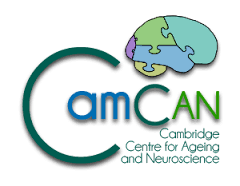CBSU bibliography search
To request a reprint of a CBSU publication, please
click here to send us an email (reprints may not be available for all publications)
Adaptive functions correlate with evoked neurotransmitter release in SYT1-associated neurodevelopmental disorder
Authors:
Park, P.Y., Bleaklet, L.E., Saraya, N., Al-Jawahiri, R., ECK, J., Aloi, M.A., Melland, H., BAKER, K., Gordon, S.L.
Reference:
eBioMedicine - Preprint 2023
Year of publication:
In Press
CBU number:
9121
Abstract:
Background: Pathogenic missense variants in the essential synaptic vesicle protein synaptotagmin-1 (SYT1) cause a neurodevelopmental disorder characterised by motor delay and intellectual disability, hyperkinetic movement disorder, episodic agitation, and visual impairments. SYT1 is the presynaptic calcium sensor that triggers synchronous neurotransmitter release. We have previously shown that pathogenic variants around the calcium-sensing region of the critical C2B domain decrease synaptic vesicle exocytosis in neurons.
Methods: Here, we have used cultured hippocampal neurons transfected with SYT1-pHluorin to examine how variants within the C2A and C2B domain of SYT1 impact evoked exocytosis.
Findings: We show that recently identified variants within the facilitatory C2A domain of the protein (L159R, T196K, E209K, E219Q), as well as additional variants in the C2B domain (M303V, S309P, Y365C, G369D), share an underlying pathogenic mechanism, causing a graded and variant-dependent dominant-negative impairment in exocytosis. We establish that the extent of evoked exocytosis observed in vitro in the presence of SYT1 variants correlates with neurodevelopmental impacts of this disorder. Specifically, the severity of motor and communication impairments exhibited by individuals harbouring these variants correlates with multiple measures of exocytic efficiency.
Interpretation: Together, this suggests that there is a genotype-function-phenotype relationship in SYT1-associated neurodevelopmental disorder, centring impaired evoked neurotransmitter release as a common pathogenic driver. Moreover, this points toward a direct link between control of neurotransmitter release and development of adaptive functions, providing a tractable target for therapeutic amelioration.

 MRC Cognition and Brain Sciences Unit
MRC Cognition and Brain Sciences Unit

